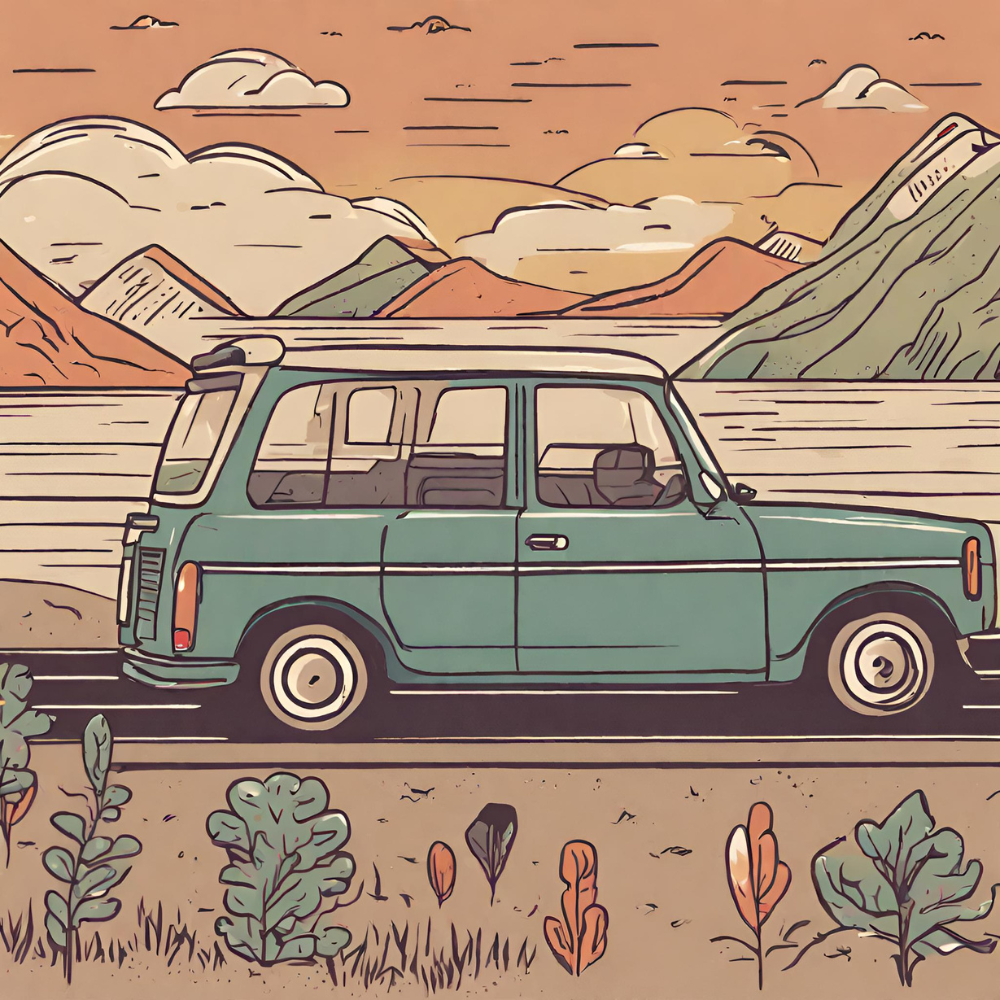When embarking on an exciting road trip adventure, the thrill of the open road and the promise of new experiences often take center stage. However, amidst the scenic vistas and miles of asphalt, it’s crucial not to overlook one fundamental aspect of road tripping: rest. Long hours behind the wheel can lead to fatigue and drowsy driving, posing serious risks to both you and other road users. To combat this, effective nap strategies for long drives, including safe road trip napping, can be a game-changer, offering you a rejuvenating break and enhancing your safety on the road.
In this guide, we’ll explore the art of road trip napping, helping you discover how to nap safely and effectively during your journey. We’ll delve into the importance of rest, signs of fatigue, planning your nap stops, finding the perfect nap spot, and preparing for your nap. So, let’s dive in and ensure your road trip is not just thrilling but also well-rested!
Understanding the Need for Road Trip Naps: Combatting Drowsy Driving on Road Trips
Before we explore the world of napping on road trips, it’s essential to grasp the perils of drowsy driving. Fatigue can impair your ability to focus, make quick decisions, and react to unexpected situations. Studies have shown that drowsy driving can be just as dangerous as driving under the influence of alcohol or drugs. The National Highway Traffic Safety Administration (NHTSA) reports that drowsy driving results in thousands of accidents and fatalities each year. Therefore, recognizing the importance of rest and understanding when to take a nap is crucial for your safety on the road. By adopting strategies for preventing drowsy driving, you’re taking a proactive step towards safer journeys.

Recognizing Signs of Fatigue: Avoiding Fatigue During Long Car Journeys
Knowing when to pull over for a nap begins with recognizing the signs of fatigue. These warning signals can vary from person to person, but common indicators include:
- Yawning and Frequent Blinking: Excessive yawning and blinking are classic signs of fatigue. If you find yourself doing this regularly, it’s time for a break.
- Difficulty Maintaining Speed and Lane Position: Struggling to maintain a consistent speed or drifting within your lane suggests reduced alertness and concentration.
- Frequent Mind Wanderings: If your mind frequently wanders away from the task of driving, it’s a clear sign of fatigue.
- Heavy Eyelids: Feeling like your eyelids are getting heavy and your vision is blurring is a strong signal that it’s time to rest.
- Irritability and Impatience: Road rage or increased irritation can be a result of fatigue, making it crucial to take a break and calm down.
- Missing Road Signs and Exits: If you start missing road signs, exits, or crucial traffic cues, it’s a sign you need a nap.
- Microsleeps: These are brief episodes of sleep that can occur without you realizing it. If you experience moments of lost time or unaccounted-for lapses in attention, it’s a sign you need a nap.
Recognizing these signs is the first step in ensuring your safety during your road trip. Napping strategically can help you avoid these hazards and enjoy your journey with peace of mind. Now that we’ve established the importance of rest and identified the signs of fatigue, let’s move on to planning your nap stops.
Planning Your Nap Stops: Road Trip Nap Preparation Guide
To nap effectively on your road trip, you’ll need to plan ahead. Start by mapping out your route and identifying rest areas and service plazas along the way. Many highways have designated spots for travelers to rest, offering restroom facilities, picnic areas, and a safe place to park your vehicle. Planning rest stops for safe road trips ensures you’ll have suitable places to nap when needed.
Additionally, take time to research other potential pitstops, such as gas stations, convenience stores, or scenic viewpoints. These locations can also serve as nap spots in a pinch. By knowing where these options are situated along your route, you’ll be better prepared to take quick and restful breaks.

Finding the Perfect Nap Spot: Road Trip Sleep Safety Tips
When it comes to finding the perfect nap spot during your road trip, rest areas and service plazas often top the list. These designated areas are strategically located along highways and interstates, making them easily accessible to weary travelers. Here are some factors to consider when choosing these spots for your road trip nap:
- Safety Considerations: Rest areas and service plazas are designed with travelers’ safety in mind. They are well-lit, monitored, and typically patrolled by law enforcement or security personnel. This added security can help you rest with peace of mind, knowing your safety is a priority.
- Amenities and Services Available: Many rest areas and service plazas offer a range of amenities, including clean restrooms, vending machines, and sometimes even picnic areas. These conveniences can enhance your nap experience and provide essential refreshments.
Alternative Options: Refreshment Techniques for Long-Distance Drivers
While rest areas and service plazas are convenient choices, they may not always be available when you need them. In such cases, consider these alternative options for a quick and safe nap:
- Gas Stations and Convenience Stores: Gas stations along your route can serve as viable nap spots. Look for stations with well-lit and secure parking areas. Convenience stores attached to gas stations often have seating areas or outdoor benches where you can relax.
- Scenic Viewpoints and Parks: If you’re traveling on a picturesque route, take advantage of scenic viewpoints and parks as nap spots. These locations not only offer a refreshing break but also provide the opportunity to enjoy the natural beauty of your surroundings.
Preparing for Your Nap: Best Practices for Road Trip Rest
Before you settle in for a road trip nap, it’s important to make the necessary preparations to ensure a comfortable and safe rest. Adjusting your seat and using travel pillows can make a significant difference in your comfort level during a nap. They provide neck and head support, helping you avoid waking up with a stiff neck. A lightweight blanket or shawl can keep you cozy during your rest.

Napping Techniques for Road Trips: Effective Nap Strategies for Long Drives
Now that you’ve found the perfect nap spot and prepared for your nap, it’s time to explore effective napping techniques for road trips. Power naps, which typically last between 10 to 20 minutes, are excellent for a quick energy boost. They help alleviate drowsiness without causing grogginess. If you have more time available and feel extremely fatigued, consider a longer nap of 60 to 90 minutes to enter deeper sleep cycles, promoting greater alertness upon waking.
Waking Up Refreshed: Combatting Drowsy Driving on Road Trips
After a well-deserved road trip nap, it’s essential to wake up feeling refreshed and alert. However, the transition from nap to active driving mode can sometimes be challenging. Here are some key considerations to ensure you wake up ready to hit the road safely:
- The Grogginess Factor: It’s not uncommon to experience a brief period of grogginess, known as “sleep inertia,” upon waking from a nap. During this time, you may feel disoriented and sluggish. To minimize the grogginess factor, give yourself time to fully wake up before attempting to drive.
- Post-Nap Stretching and Exercises: Engaging in simple stretches and exercises after your nap can help increase blood flow, reduce muscle stiffness, and improve alertness.
Conclusion: Strategies for Preventing Drowsy Driving
In conclusion, road trip naps are not just an indulgence; they are a vital tool for ensuring your safety and enjoyment during long drives. By understanding the risks of drowsy driving, recognizing signs of fatigue, planning your nap stops, finding the perfect nap spot, and preparing for your nap, you can nap safely and effectively during your road trip. Additionally, mastering napping techniques, waking up refreshed, and following essential tips will help you stay alert and focused on the road. Remember, a well-rested driver is a safer driver, and a safer driver makes for a more enjoyable journey.


